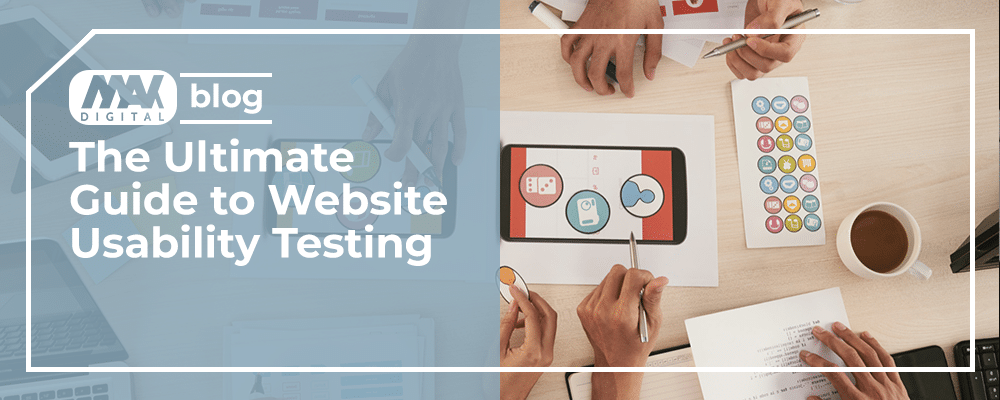
What is Website Usability Testing
Website usability testing is the process of observing how users interact with a website to evaluate how the website’s design and functionality help them achieve their goals. Website usability testing can help you learn how your web visitors navigate your website, carry out tasks on your website, and the pain points they encounter doing so.
It is ideal to conduct website usability testing during different stages of website development before launch and post-launch and during upgrades and new feature releases.
Website Usability Testing Methods
Remote vs In-Person
Website usability testing can be remote or in-person. Remote tests entail observing over the phone or online as test participants interact with a website from their home, office, or anywhere in the world. In-person tests are conducted with the test participants and test moderator in the same physical space, whether at the company, a testing lab, or the participant’s natural location. In-person tests allow the moderator to observe participants’ body language and expressions onsite as they perform assigned tasks.
Examples of remote usability testing: phone interviews, video calls, etc.
Examples of in-person usability testing: guerrilla testing, field studies, eye tracking, etc.
Moderated vs Unmoderated
Although most website usability tests have a professional moderator, the moderator doesn’t have to actively moderate all types. Unmoderated tests may have official moderators, but they will not actively work the participants through assigned tasks. Moderated usability tests entail the active guidance of a professional moderator who tells participants what to do from start to finish. Moderated and unmoderated website usability testing can be remote or in-person.
Examples of moderated usability testing: card sorting, etc.
Examples of unmoderated usability testing: session recordings, etc.
Scripted vs Unscripted
Scripted website usability testing entails designing a set of tasks in a meaningful order for test participants to do and observing how they perform the tasks. Unscripted tests allow participants to freely interact with a website as they like without guidance while observing their behavior as they do so. Scripted and unscripted tests can be in-person or remote and moderated or unmoderated.
Examples of scripted usability tests: focus groups, A/B testing, surveys, etc.
Examples of unscripted usability tests: sessions recordings
Steps to Conduct Website Usability Testing
Step 1: Decide on What to Measure
Decide what elements of your website you want to test and what you hope to achieve with the test. Of course, you can observe how users interact with your website as a whole, but you need to focus on a specific set of goals. Use these three usability testing indicators to develop your testing metrics;
- Efficiency: how much burden is placed on the users to find out how to carry out the assigned tasks or navigate the website to achieve their goals?
- Effectiveness: can users achieve their goals based on their expectations of what the product (website) promises?
- Satisfaction: will users be satisfied with their journey of interacting with the website?
These indicators will help you define other factors for your website usability testing by answering the following questions;
- What is the user’s goal?
- What steps must the user take to achieve the goal?
- How can the user’s effort be measured?
Step 2: Identify the Best Website Usability Testing Method
Find out what website usability testing method can help you achieve your testing and business goals while staying within a reasonable budget and timeframe. Some usability testing methods are more tasking and expensive than others. In-person moderated website usability testing methods are generally costlier and more tasking than unmoderated/moderated remote testing. You will spend more money and use more resources for conducting a field study than you would on a video interview on Zoom or Google Hangouts. So, consider the available resources, budget, and estimated duration of a proposed website usability testing before choosing a suitable testing method.
Set 3: Create a Task Scenario
Develop the test considering the test goals and chosen testing method. You can ask participants to use your website as they like for a few minutes. Or ask them to use your website for a single purpose, perhaps, to order a product. On the other hand, you can create a set of tasks and observe how they navigate your website to do them. Ensure to time website usability testing to measure efficiency.
Step 4: Find Participants
Source for five to 10 valid participants similar to the actual users of your website. Avoid settling for test participants who are not in same the demographics as your customer base. Otherwise, you may end up conducting a test that doesn’t provide insights about how your actual web visitors interact with your website and their experience. While you can use your employees as participants for usability testing, it may not generate accurate results because they are familiar with the workings of your website. If sourcing for valid participants proves difficult, hire proxy users on paid third-party platforms.
Step 5: Conduct the Test
Finalize the details about the test and choose when and where to conduct it. Website usability testing can take more than a day because it involves external parties beyond your control. Pick a few days within a week or month and have each participant state their availability. Choose the test location. If in-person, where exactly? And if remote, is it a phone call interview or a video call, and if so, which video call platform exactly? Communicate these details to your participants in time enough for them to prepare for the test.
Before starting a website usability test, inform the participants about the terms, tasks, and the event order, and ask for their permission if you will record the test.
Step 6: Analyze your Findings
After the test, review your findings, analyze the data, and document the results in a report. If you used a third-party usability testing tool, you may not have to do the analysis yourself. But if you want to analyze your findings yourself, spreadsheets are enough for analyzing and categorizing simple data. Use the thematic analysis for qualitative data to understand patterns in verbal and written feedback and answers. And use correlation analysis for quantitative data to identify the connection between the generated responses.
Finally
Run website usability testing periodically to ensure your website runs smoothly at all times, including after a new feature launch.






